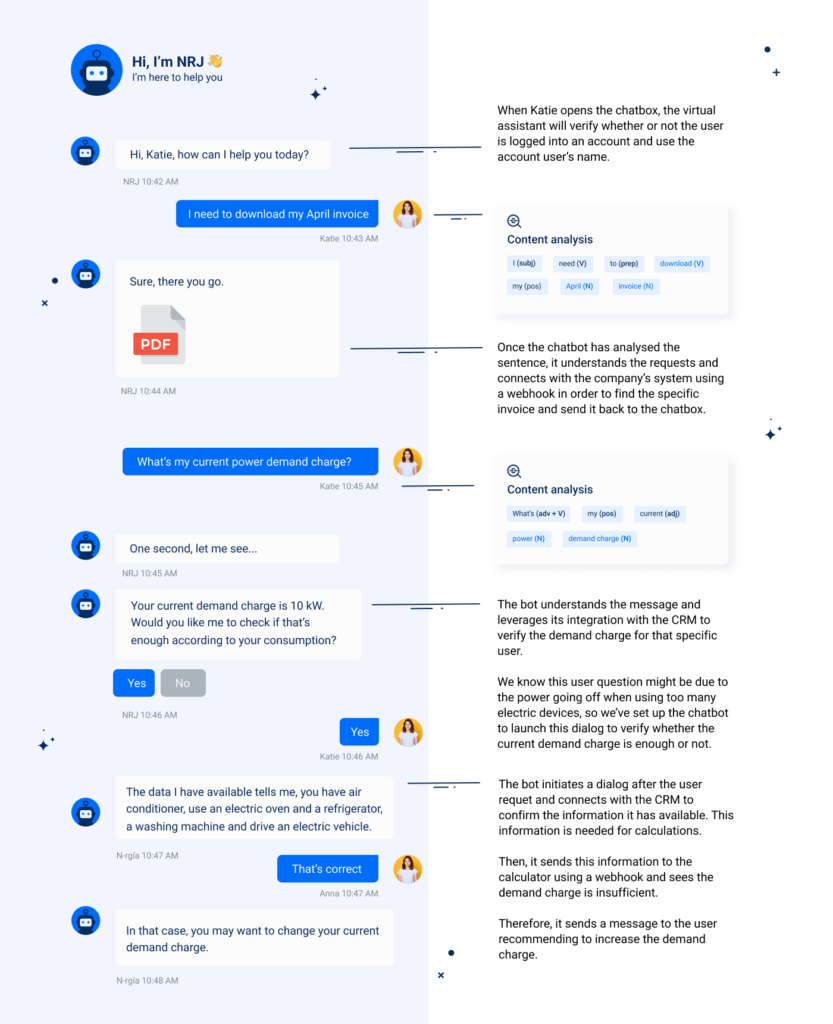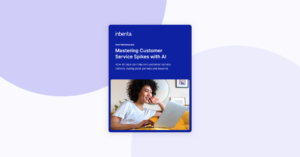It’s been a few years since the first chatbots emerged. Many of them were button-based and guided users through predefined flows.
Although many companies are still using this kind of basic chatbots, many others have turned to more advanced artificial intelligence and natural language processing technologies.
These go beyond basic interactions enabled by button-based systems: they are able to understand a user’s intent by analyzing requests in natural language made by the user in the chatbox. That’s the bare minimum, don’t you think?
And yet, it is extremely complex. The human language is so rich, wide, and full of subtleties that being able to understand every single request isn’t that easy for machines.
However, chatbots understanding natural language produce better results in terms of customer satisfaction. They reduce friction and frustration, because, let’s face it, what happens when user requests aren’t represented in any of the button options? That probably generates even more frustration.
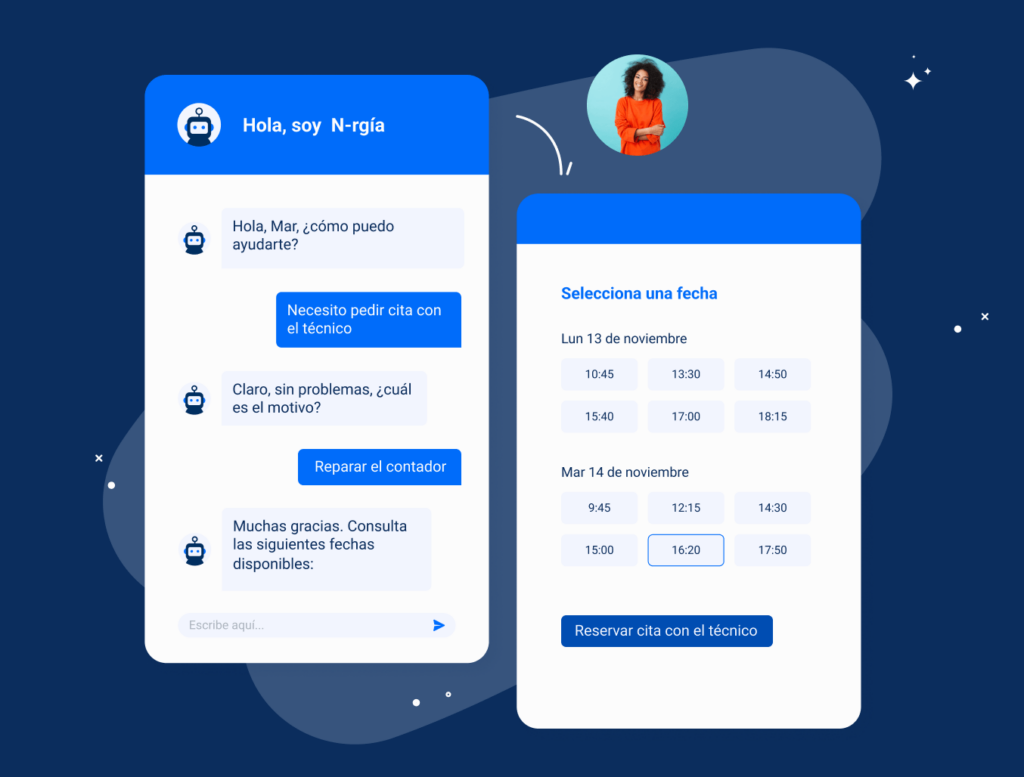
Beyond informational bots
In the quest of a bot that acts and responds like a human, we see a need of connecting that bot with other systems to add transactionality and intelligence.
Let’s take a simple case. A basic bot, when a user asks ‘I want to download my last power bill’, will point to a content that explains the steps to download the bill. But what if we could give the bot the ability to share the bill with the user through the chatbox?
Advanced chatbots integrate through APIs and webhooks to other systems, such as CRMs, CMSs, ERPs, but also internal systems of banks, insurance companies, telephone companies and even eCommerce stock systems.
But what kind of actions can a transactional chatbot enable?
What does a transactional chatbot enable? An example in the utilities industry
The answer to this question is both simple and complex at the same time. With a proper setup, a chatbot can allow multiple transactions. This will depend on its integrations with different systems. However, the most advanced capabilities of current chatbots can go above and beyond.
Let’s take an example with Inbenta’s technology and see what their bots are already capable of doing for a utility company.
Invoice download
Let’s resume the case where a user wants to download a specific power bill. With a transactional chatbot, if the user is logged in, the chatbot will be able to go search on the user’s account and return the bill directly into the chatbox, or even by email.
Payment of bills
Some companies are already implementing chatbots that include instant payment methods to pay bills through this channel.
Electric meter reading
It is now already possible to send your own electric meter reading via chatbot or Whatsapp channels (automated with a bot).
Power outages
In an automated way, electricity outages and restoration of service can be communicated to customers.
Requesting appointments with technicians
Appointment-taking can be automated by connecting the chatbot with the scheduling system to automatically offer a suitable appointment to the customer without the intervention of any agents.
3 examples of chatbots in utilities
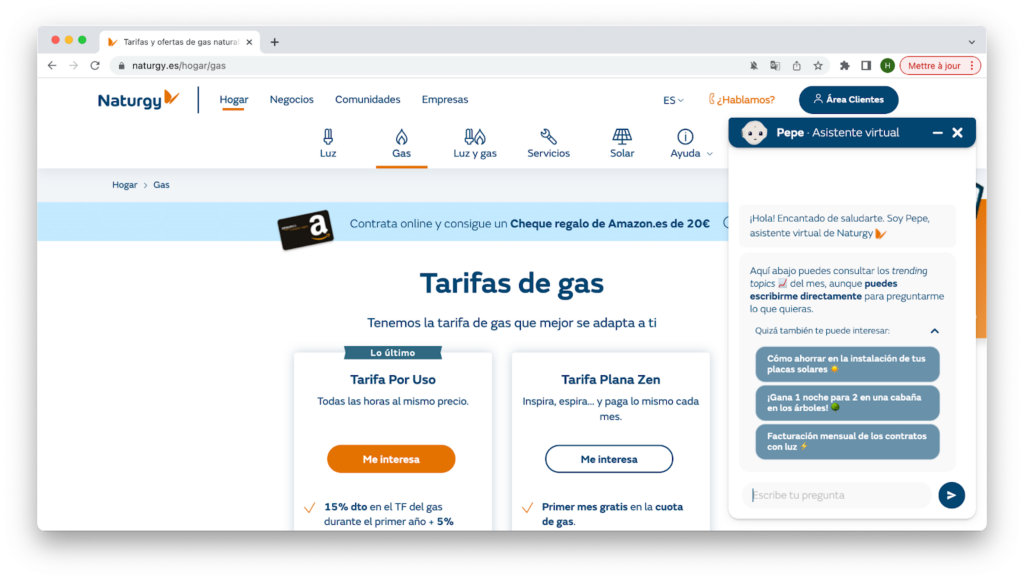
Pepe, Naturgy’s chatbot
Naturgy is one of the biggest power suppliers in Spain. With both electricity and natural gas offers, they have millions of customers around the world. In order to answer thousands of requests per day, Naturgy implemented Pepe, a natural language-based chatbot that understands users’ requests and provides the most accurate answer.
Pepe can give you tips on how to save money in solar panel installation, information on how you can switch contracts and it even encourages you to participate in a contest to win a hotel stay.
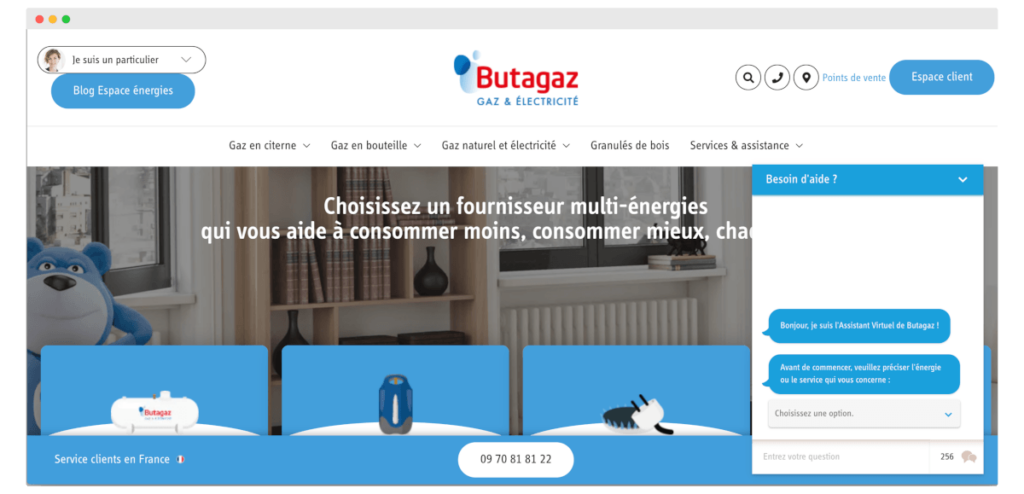
Butagaz’s bot
Another good example of chatbots in the utilities industry is Butagaz’s virtual assistant.
A French provider of bottled gas, such as liquefied petroleum gas, butane, and propane, Butagaz has over 4 million customers.
Understanding all kinds of requests, even those containing misspellings and errors, Butagaz’s chatbot leads customers through their journey until they find the exact answer they’re looking for.
Plus, Butagaz’s chatbot has different journeys for different profiles (providers, end customers, etc.)
Neonergia’s Whatsapp-based chatbots
Another approach to implementing chatbots involves integrating the technology in social channels like Whatsapp.
In many countries, WhatsApp is a huge success and is the preferred channel for the general population to communicate among themselves and now also with brands. That’s Brazil’s case.
That’s why Neoenergia, part of Iberdrola, a major utility company operating around the world, decided to implement natural language understanding chatbots through WhatsApp to assist their customers. They can access their account for energy assessments, payments, meter setup and checks, bill download, power usage, and more, and they can be notified about any service disruptions.
Overview of a transactional chatbot for utilities
To showcase how one of these conversational interfaces works, we’ve put together an example with a step-by-step explanation of how a smart virtual assistant thinks and processes information, down to every integration and request sent to a third-party software.
Let’s take a look at it.
